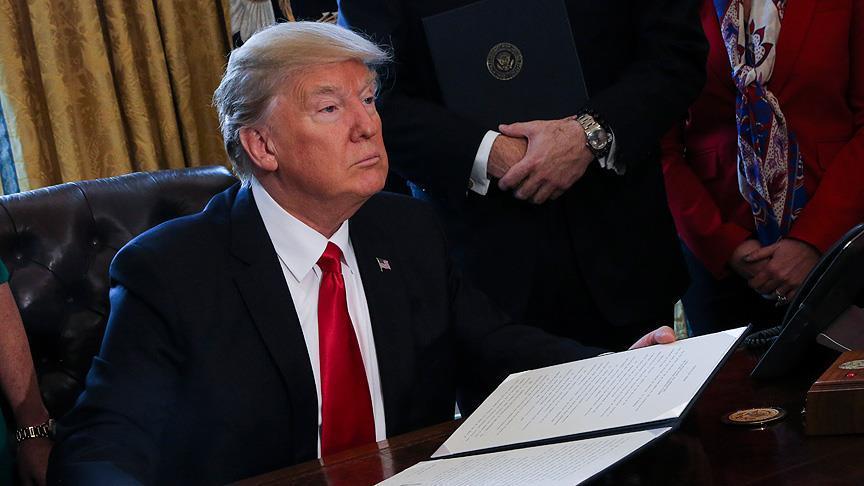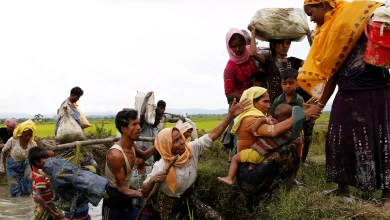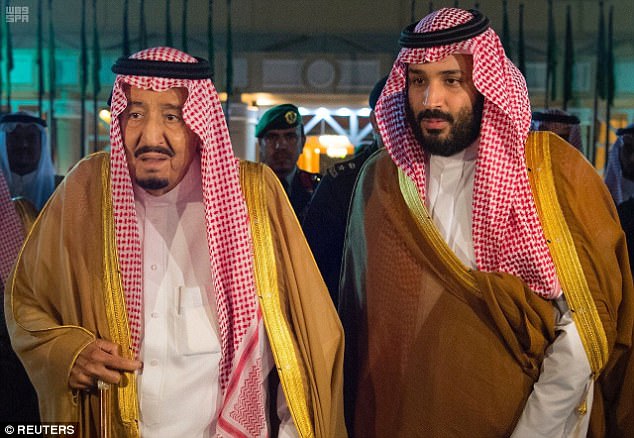Trump instructs military to begin planning for withdrawal from Syria

President Trump has instructed military leaders to prepare to withdraw U.S. troops from Syria but has not set a date for them to do so, according to a senior administration official.
In a meeting with top national security officials Tuesday, Trump stressed that U.S. troops can be involved in current training tasks for local forces to ensure security in areas liberated from the Islamic State, the official said.
But the president said that the U.S. mission would not extend beyond the destruction of the Islamic State, and that he expects other countries, particularly wealthy Arab states in the region, to pick up the task of paying for ongoing stabilization and reconstruction, including sending their own troops, if necessary.
Subscribe to the Post Most newsletter: Today’s most popular stories on The Washington Post
In a statement Wednesday morning, the White House said that the “military mission . . . in Syria is coming to a rapid end, with ISIS being almost completely destroyed. The United States and our partners remain committed to eliminating the small ISIS presence in Syria that our forces have not already eradicated.” 
The statement said, “We will continue to consult with our allies and friends regarding future plans. We expect countries in the region and beyond, plus the United Nations, to work toward peace and ensure that ISIS never re-emerges.” ISIS is an acronym for the Islamic State.
The decision, which Trump had telegraphed with recent statements saying it was time for the United States to “get out” of Syria, appeared to conflict with senior military officials who have repeatedly outlined the need for an ongoing military presence in Syria.
Those officials have stressed the importance of preventing both an Islamic State resurgence and increased territorial gains by Russian and Iranian-backed Syrian forces, and of giving the United States leverage in upcoming political talks to resolve Syria’s civil war.
In some ways, Trump has split the difference between his own desire for a quick exit and military concerns about leaving a vacuum in Syria. By ordering a “conditions-based” departure, pegged to Islamic State destruction, but not giving a date, he has left wiggle-room for further discussion as to what that “destruction” means.
In comments Tuesday, he said the Syria mission was “close to 100 percent” accomplished, and said that “I want to get out. I want to bring our troops back home.” There are currently about 2,000 U.S. troops in Syria.
At the same time, Gen. Joseph L. Votel, head of the U.S. Central Command, agreed that “a lot of very good military progress has been made” but said that “the hard part, I think, is in front of us.” Votel, speaking at the U.S. Institute of Peace on Tuesday, described the military’s counter-Islamic State mission as including “stabilizing, consolidating gains” and “addressing long-terms issues of reconstruction” along with U.S. diplomatic and nonmilitary aid efforts.
Trump came to office promising to stay out of foreign wars and calling for a U.S. withdrawal from Afghanistan. At the same time, however, he has repeatedly criticized former president Barack Obama for setting a timetable for withdrawal from Iraq and said that the 2011 departure of U.S. troops from that country was ill-advised and left the door open for the rise of the Islamic State.
Last August, as he announced a troop surge in Afghanistan, Trump said that “conditions on the ground, not arbitrary timetables, will guide our strategy from now on.” The “consequences of a rapid exit,” he said, “are both predictable and unacceptable . . . a hasty withdrawal would create a vacuum that terrorists — including ISIS and al-Qaeda — would instantly fill.”
Director of National Intelligence Daniel Coats told reporters Wednesday morning that the Tuesday decision followed an “all hands on deck” meeting at the White House. He said he could not release any information about the intelligence community’s assessment regarding the likelihood of an Islamic State resurgence in Syria in the near future if U.S. troops leave now.
As he has formulated his decision on Syria, Trump has approached regional leaders, particularly in the Persian Gulf, about contributing more to the effort in Syria. Both Saudi Arabia and the United Arab Emirates were once active participants in the U.S.-led coalition there, but their efforts have diminished as they have fought their own war against rebel fighters in Yemen.
In December, Trump came away from a phone conversation with Saudi King Salman believing that he had an agreement for a $4 billion Saudi contribution to Syria stabilization, although the Saudis were said to have been privately taken aback by Trump’s version of a solid offer.
Late last month, the Saudi and Emirati national security advisers traveled here to discuss Syria with H.R. McMaster, Trump’s outgoing national security adviser, and Trump has spoken by telephone in recent days with gulf leaders. In a Tuesday call with Salman, the White House said, “the President and the King discussed joint efforts to ensure the enduring defeat of ISIS and counter Iranian efforts to exploit the Syrian conflict to pursue its destabilizing regional ambitions.”
Much of Trump’s concern about an ongoing military presence appears to revolve around money. The United States, he said Tuesday, had gotten “nothing out of $7 trillion [spent] in the Middle East over the last 17 years,” a calculation that apparently included the Afghanistan war against the Taliban in South Asia, where he last year approved a U.S. troop increase.
The $7 trillion figure appears to refer to projections of expenditures in the Middle East and South Asia through 2050, if current deployment levels continue. It also includes substantial costs tied to veterans’ care and disability benefits and war-related domestic and diplomatic security measures. Without those inclusions, experts estimate the costs of U.S. military operations in Afghanistan and the Middle East, including the 2003 invasion and subsequent occupation of Iraq, at significantly less. A Congressional Research Service estimate put the cost at $1.6 trillion through the end of 2016.
Votel, along with Defense Secretary Jim Mattis, has repeatedly said in recent months that U.S. troops would be staying in Syria for the foreseeable future to guarantee stability and a political resolution to the civil war, which initially created space for the Islamic State to advance.
According to Brett McGurk, the State Department’s special envoy to the counter-Islamic State coalition in Iraq and Syria, the United States has spent about $100 million so far on stabilization of areas liberated from the militants, half of which was spent on mine removal. Other members of the coalition, he said, have spent about the same amount.
Last week, Trump froze an additional U.S. $200 million for the effort, which had been announced in January by Rex Tillerson, his since-ousted secretary of state.
McGurk, speaking with Votel at the U.S. Institute of Peace, said that expenditure of the money is currently under review, “looking at where it can be spent most effectively.” He said the freezing of the money “has not hampered what we’re doing in the field” in places such as Raqqa and other liberated areas, where the goal is to de-mine, remove rubble and provide basic services such as water and electricity to allow residents who fled the fighting to return home.
“As we undertake this important review,” he said, “it has required us to go to our coalition partners, and remind them that the coalition has a very big role to play in this.”
Votel and McGurk appeared alongside U.S. Agency for International Development Director Mark Green as the three sought to emphasize how their separate roles are interrelated. “Most importantly, our success, USAID’s success, depends upon the success of the State Department, in mobilizing international resources and their role, but also, of course, DoD [the Defense Department], helping us to have access and security,” Green said.
“Without their success, we can’t possible do what it is that we seek to do,” he said.
Defense, State and USAID are currently conducting what Green called “the first ever multiagency framework” to guide their cooperation in conflict areas.
Due for release in the coming weeks, he said, “it’s called the Stabilization Assistance Review, and it’s built upon the lessons that we’re learning in Syria, Iraq, but also quite frankly a number of other places, the work that we’ve been doing over the last decade or so. This helps USAID because it establishes a clear division of labor and responsibilities in the joint efforts of USAID, State and DoD in stabilization.”
Votel said that the effort to remove remaining pockets of Islamic State fighters in southeastern Syria had been slowed in recent week because members of the U.S. proxy force fighting on the ground, the Kurdish-dominated Syrian Democratic Force, had left the fight to join fellow Kurds fighting against Turkey in the northwest.
That area, in the province of Afrin, is a Kurdish stronghold. Turkey considers the Syrian Kurds terrorists, allied with Kurdish separatists in Turkey itself.
“We certainly have to continue to look at how we work through this,” Votel said.
* This is according to The Washington Post..




